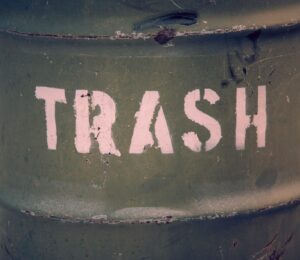 Welcome to our comprehensive guide on the essentials of medical waste disposal. In modern healthcare, ensuring safe and efficient waste management is as crucial as the care itself. This article dives into the world of medical waste containers, specifically focusing on the iconic red bins used for hazardous waste collection. Whether you're in the healthcare industry or simply curious about the processes behind medical waste handling, this guide will provide valuable insights into medical waste bins, the importance of red containers, and much more.
Welcome to our comprehensive guide on the essentials of medical waste disposal. In modern healthcare, ensuring safe and efficient waste management is as crucial as the care itself. This article dives into the world of medical waste containers, specifically focusing on the iconic red bins used for hazardous waste collection. Whether you're in the healthcare industry or simply curious about the processes behind medical waste handling, this guide will provide valuable insights into medical waste bins, the importance of red containers, and much more.
Join us as we explore the answers to common queries, from the basics of medical waste disposal to the specifics of red containers and their significance in keeping both medical professionals and the public safe.
What is Medical Waste? A Primer
When we talk about medical waste containers, it's crucial first to understand what medical waste actually encompasses. Broadly, medical waste includes any byproduct of healthcare or medical procedures, which could be potentially infectious or harmful if mishandled. This category of waste is generated from various settings, including hospitals, clinics, dental practices, laboratories, and more. It's not just about needles and blood-soaked bandages; it also includes discarded gloves, petri dishes, and even unused medications. The meticulous disposal of medical waste is not just a regulatory requirement; it's a vital practice to prevent the spread of infections and diseases. Properly classified and segregated waste ensures that it's handled, treated, and disposed of in a manner that minimizes risks to healthcare workers, patients, and the broader community.
The Significance of Color: Why Red Containers?
 In the realm of medical waste disposal, colors aren't just decorative—they're informative. Red containers hold a significant role, specifically designated for medical waste collected that poses a biological hazard. This includes items like used needles, contaminated gloves, and anything saturated with blood or other potentially infectious materials. The bright red color serves as a universal alert, signaling healthcare workers to proceed with caution and the general public to keep their distance. This color-coded system helps in segregating waste properly at the source, which is crucial for ensuring that hazardous materials are treated and disposed of according to stringent safety standards.
In the realm of medical waste disposal, colors aren't just decorative—they're informative. Red containers hold a significant role, specifically designated for medical waste collected that poses a biological hazard. This includes items like used needles, contaminated gloves, and anything saturated with blood or other potentially infectious materials. The bright red color serves as a universal alert, signaling healthcare workers to proceed with caution and the general public to keep their distance. This color-coded system helps in segregating waste properly at the source, which is crucial for ensuring that hazardous materials are treated and disposed of according to stringent safety standards.
By understanding the importance of red containers, facilities can better manage their waste, protecting both employees and the environment from potential harm.
Solving the Puzzle: The Mystery Behind Red Containers Crossword
The phrase “medical waste collected in red containers crossword” might puzzle some, yet it highlights the awareness and curiosity surrounding the disposal of hazardous medical waste. Crosswords and puzzles often feature topics from our daily lives, making the mention of red containers a tool for education and engagement on a subject as critical as medical waste management.
These puzzles serve not just as leisure activities but as subtle educators, reinforcing the significance of proper waste segregation. By embedding such crucial information in crosswords, we indirectly learn the importance of distinguishing different types of medical waste and the specific role red containers play in maintaining health and safety standards. It's a unique way to keep the conversation about medical waste management engaging and informative.
A Closer Look at Medical Waste Bins: Types and Uses
 Medical waste bins are not one-size-fits-all. Understanding the variety and purpose of these bins is crucial for effective waste management within healthcare settings. Primarily, these bins are categorized based on the type of waste they are designed to hold—ranging from sharps containers for needles and scalpels to cytotoxic containers for chemotherapy waste. Each type has distinct features, like puncture-resistant materials for sharps to prevent injury or specific labeling for chemical waste to ensure proper handling. The use of dedicated bins, such as the medical waste bin, facilitates not only the safe disposal of hazardous materials but also aids in the segregation process,
Medical waste bins are not one-size-fits-all. Understanding the variety and purpose of these bins is crucial for effective waste management within healthcare settings. Primarily, these bins are categorized based on the type of waste they are designed to hold—ranging from sharps containers for needles and scalpels to cytotoxic containers for chemotherapy waste. Each type has distinct features, like puncture-resistant materials for sharps to prevent injury or specific labeling for chemical waste to ensure proper handling. The use of dedicated bins, such as the medical waste bin, facilitates not only the safe disposal of hazardous materials but also aids in the segregation process,
Ensuring that each category of waste is treated and disposed of according to the appropriate safety and environmental standards. This structured approach minimizes health risks and enhances the efficiency of waste management protocols.
Safe Disposal Practices for Medical Waste
Implementing safe disposal practices for medical waste is paramount to preventing healthcare-associated infections and ensuring environmental safety. Key to these practices is the correct use of medical waste containers and bins, which are instrumental in separating and disposing of hazardous materials securely.
Firstly, it's essential to identify the type of waste correctly and choose the appropriate container, such as a medical waste bin for sharps or a red container for items contaminated with bodily fluids. Furthermore, ensuring that these bins are properly labeled and placed in easily accessible yet secure locations within healthcare facilities is crucial.
Regular training for healthcare personnel on safe disposal procedures can significantly reduce risks associated with mishandling. By adhering to these practices, facilities can maintain a safer environment for both healthcare providers and patients.
Regulations and Compliance: Navigating the Rules of Medical Waste Disposal
 Understanding and adhering to the regulations surrounding medical waste disposal is not just about compliance—it's about commitment to safety and environmental stewardship. Various federal, state, and local laws dictate the proper management of medical waste, encompassing everything from segregation and packaging to transportation and final disposal. Facilities must stay informed about the latest regulations to ensure their waste management practices are up-to-date. Implementing a comprehensive waste disposal policy, including the correct use of medical waste containers and bins, plays a critical role in maintaining compliance.
Understanding and adhering to the regulations surrounding medical waste disposal is not just about compliance—it's about commitment to safety and environmental stewardship. Various federal, state, and local laws dictate the proper management of medical waste, encompassing everything from segregation and packaging to transportation and final disposal. Facilities must stay informed about the latest regulations to ensure their waste management practices are up-to-date. Implementing a comprehensive waste disposal policy, including the correct use of medical waste containers and bins, plays a critical role in maintaining compliance.
Moreover, regular audits and training sessions can help identify any gaps in current practices, ensuring that the handling of medical waste is not only compliant but also optimized for safety and efficiency. Navigating these regulations effectively protects healthcare workers, patients, and the community at large.
